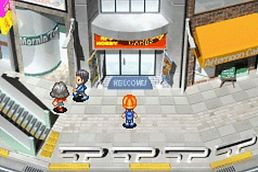Difference between revisions of "Yu-Gi-Oh! The Sacred Cards"
(→Promos are:) |
|||
| Line 36: | Line 36: | ||
* [[Riryoku]] | * [[Riryoku]] | ||
* [[Negate Attack]] | * [[Negate Attack]] | ||
| − | + | * [[obilesk the tormentor]] | |
{{stub}} | {{stub}} | ||
Revision as of 01:33, 30 August 2010
An RPG-style game for the Game Boy Advance, The Sacred Cards offered fans the unprecedented opportunity to use the Egyptian Gods, albeit with altered effects to adhere to the game's simplified gameplay mechanics.
The story of the game loosely followed the Battle City story arc of the anime and manga, with adjustments to allow the player to act the part of a major character and participate all the way into the Battle City Finals.
One important thing to note is that the game automatically cuts to the ending sequence immediately after the defeat of Marik Ishtar, with no option to save. Because of this, any money or rare cards earned in the final duel are irrelevant, and the player never has an opportunity to use The Winged Dragon of Ra without the use of a game-hacking device. The only way to do this normally is to allow Marik to Summon Ra and destroy it (or somehow discard it from the hand), then Special Summon it from the graveyard. Also noticeable in the game is that most of the cards have their original OCG artworks like "Soul of the Pure", "Monster Reborn", and "Last Day of Witch".
An interesting Konami 'cameo' in this game is the Miracle Moon music in the Arcade, which is taken from the Beatmania series of games.
The sequel to this game is Yu-Gi-Oh! Reshef of Destruction.
